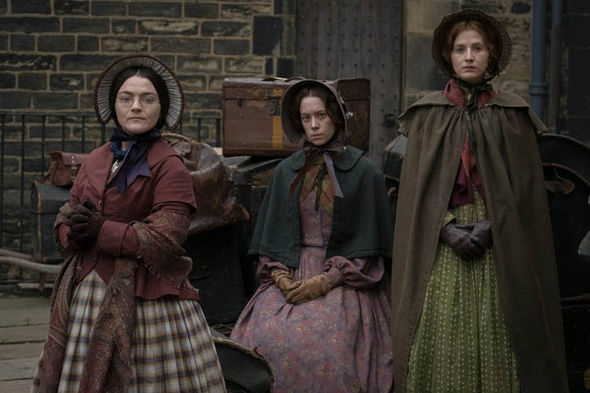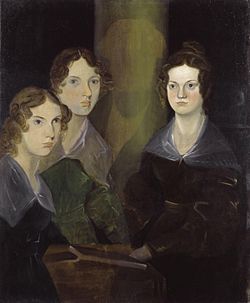
I first saw that the BBC was going to make a drama about the Brontë sisters a few months ago, and I have been looking forward to it ever since. The Brontë sisters are some of my favourite authors and reading Jane Eyre at the impressionable age of 15 was, I would say, the beginning of an interest bordering on obsession which has lasted for years.
To Walk Invisible was directed and written by Sally Wainwright, and aired on BBC One on 29th December: a festive TV treat. It began with a surreal opening scene, featuring the four surviving Brontë siblings playing one of their favourite childhood games, set in their own fictional world of Gondal. This is pretty much all we see of their childhood and next thing we know, the siblings are grown adults; the girls busy writing and going for walks across the dramatic Yorkshire moors, and Branwell is drinking himself into an early grave. All of the actors were well-cast for their roles. I particularly liked Chloe Pirrie as Emily Brontë. She gave a very earthy yet at times, very impassioned, portrayal of Emily that seemed to reflect the characters from her only published novel, Wuthering Heights. Charlie Murphy played Anne as she is always shown to be: sweet tempered, gentle and a bit of a pushover. I did not warm to Finn Atkins’ Charlotte Brontë, but then neither did I warm to the (what I assume to be accurate) account of the real-life Charlotte I have come across in several biographies. Of course, Jonathan Pryce could not fail to give a compelling and empathetic performance as the Reverend Patrick Brontë and Adam Nagaitis was a pathetic and at times, hateful Branwell.

The first half of this drama was rather slow, I felt, and for those of us who may already know a few facts about the Brontës, it was a somewhat frustrating pace. In particular, the drama seemed to focus very heavily on Branwell and how he drank. I felt it was a shame for the drama not to show much of the childhood of these extraordinary people. It might have added context to the way in which the sisters treated Branwell in their adult life. I also felt it was something of a disservice to show only this side of Branwell, which sadly is pretty much all he is ever known for anyway. Given that in one of the final scenes, the famous portrait of the three Brontë sisters is shown, it might have been nice to have had the artist – Branwell Brontë – credited earlier. His end was sad and untimely and self-inflicted, but that is not all that there was to him and it is interesting to consider what he might have achieved had alcohol and drugs not had such a hold over him.

The pace picked up a little once the girls began to write their most famous novels and sought out publishers for them. The scene in which Charlotte tells her father that she is the famous author of Jane Eyre is particularly touching and one gets a real sense of how brave, how thrifty and how ground-breaking these young women were. The script alludes to the fact that at the time, Wuthering Heights, Agnes Grey and Jane Eyre were all viewed as fresh and radical. It gives an idea also of how celebrated Charlotte was in her own lifetime and how successful. This is further accentuated in another charming scene when Charlotte and Anne visit London and reveal themselves to their publishers.
After this, the drama moves quickly towards its tragic and, in my opinion all too abrupt close. Inevitably, Branwell drinks himself to death and the sisters have to deal with the aftermath. Charlotte and Patrick are shown in tears – a hint of what was to come. The scenes we then view are from the modern day: images of the Brontë parsonage as it is now with its plastic covers protecting the table at which the novels were written and its bright and airy visitor centre and shop. I liked the contrast and how tangible it made the history feel. However, what I did not like was that the end of Emily and Anne’s lives was relegated to some typed text at the bottom of the screen, and the odd choice not to feature the rest of Charlotte’s. Although sad, I think it a shame that we did not see how Charlotte dealt with the death of her siblings, or how went on to be celebrated further and to marry before she died of pneumonia in 1854.
I do not know if the writer had a specific purpose in showing only this small section of the life of the Brontë family, but as a viewer and a fan, it did seem that several important episodes which might have shed a little more light on the quiet and largely unfamiliar Brontë story, were unfortunately omitted. That being said, To Walk Invisible was an interesting drama and worth watching for the performances of the actors.
